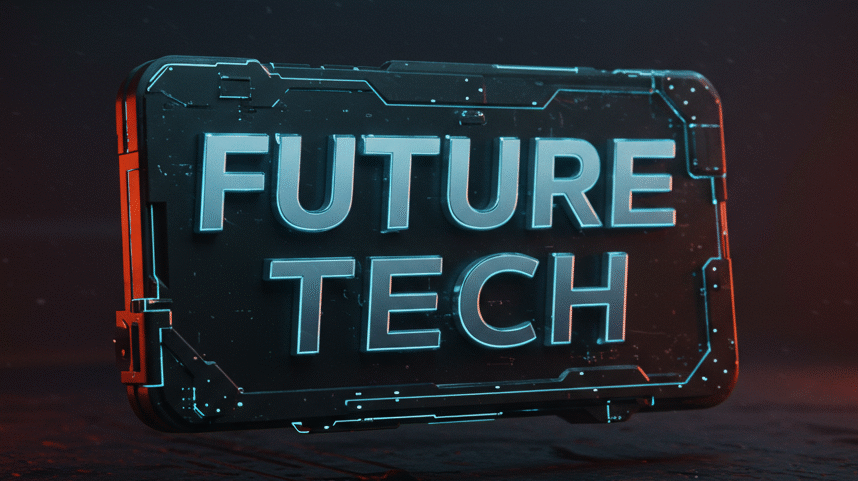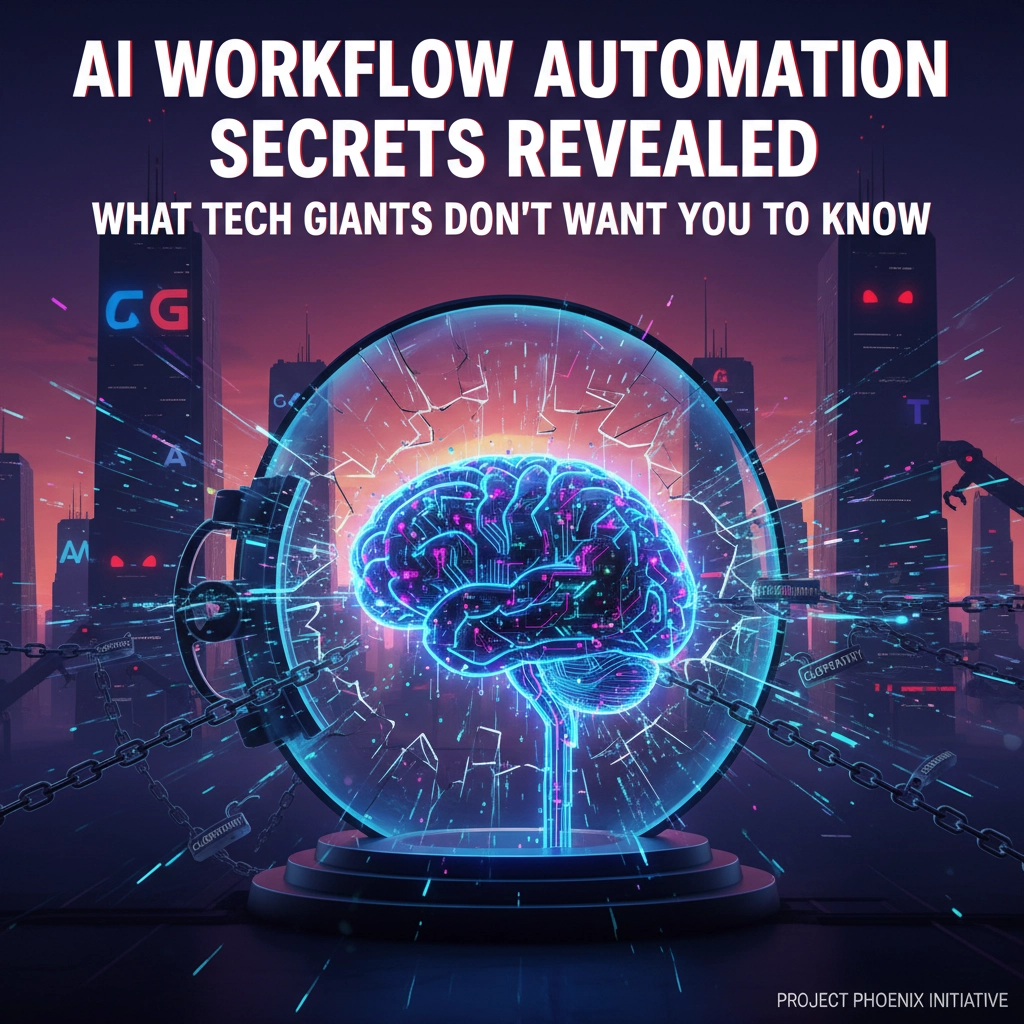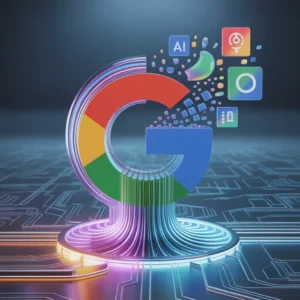Ever wonder why your company's still drowning in manual tasks while tech giants seem to have everything automated? Here's the thing that'll blow your mind: it's not because they have better technology. It's because they know something most businesses don't.
The AI workflow automation game isn't what you think it is. While everyone's chasing the latest AI buzzword, the real players are quietly using strategies that most companies completely miss. Let's dive into what's actually happening behind closed doors.
What Tech Giants Actually Don't Want You to Know

The biggest secret? You don't need to automate everything. I know, I know – that sounds backwards when everyone's screaming about full automation. But here's what the big companies figured out years ago: strategic automation beats comprehensive automation every single time.
Most businesses think they need to digitize every single process. They'll spend months trying to automate their coffee ordering system while their actual revenue-generating processes still run on spreadsheets and prayer. Tech giants focus on end-to-end automation of the processes that actually matter.
Instead of replacing isolated tasks like sending emails or copying data, they chain logic, context, and prediction across entire systems. This means fewer handoffs and complete processes that run without human babysitting. While your company's still manually transferring data between five different systems, they've got AI handling the entire flow from start to finish.
The kicker? Modern AI workflow platforms offer visual builders that let non-technical people create these automations. Your operations manager doesn't need to wait three months for the dev team – they can build it themselves this afternoon.
The Real Performance Numbers Nobody Talks About
Let me tell you about Sarah, a operations manager at a mid-sized manufacturing company. Six months ago, her team was drowning. They'd spend half their day just moving data between systems, following up on delayed orders, and putting out fires that could've been prevented.
Then they implemented AI workflow automation – but not the way everyone else does it. Instead of trying to automate everything, they picked three critical processes: order routing, inventory alerts, and quality control flagging.
The results? They saw a 35% increase in productivity within two months. But here's the part that'll make you question everything: they only automated about 20% of their total processes.

Toyota's got the numbers that prove this approach works at scale. They installed sensors on their production equipment and fed the data into an AI-powered platform. The result? A 25% reduction in downtime and 15% increase in overall equipment effectiveness. They're saving $10 million annually with an estimated ROI of around 300%.
But here's what most people miss about Toyota's success: they didn't try to automate their entire factory overnight. They focused on predictive maintenance – one critical workflow that impacts everything else.
Why Everyone's Doing AI Workflow Automation Wrong

Most companies approach AI automation like they're building a house by starting with the roof. They'll invest in the fanciest AI platform, hire consultants, and then wonder why nothing works smoothly.
The smart approach works backwards from problems, not forwards from technology. Here's how the process should actually work:
• Identify your biggest bottlenecks – Where do tasks get stuck most often?
• Map the entire workflow – Don't just look at individual tasks, trace the whole journey
• Find the decision points – Where do humans currently make choices that could be predicted?
• Start with the highest-impact connections – Automate the bridges between systems, not just the tasks
• Build in real-time decision making – Let AI take action the moment conditions are met
The difference between basic automation and AI workflow automation is like the difference between a calculator and a financial advisor. Basic automation follows simple rules: "If this, then that." AI workflow automation incorporates context, learns from patterns, and makes predictions about what should happen next.
Smart businesses use AI to route support tickets based on predicted urgency, flag invoices through anomaly detection, and trigger supply chain alternatives when delays hit – all without human intervention.
The Data Collection Reality Behind AI Systems
Here's something that'll make you think twice about those "free" AI tools: every interaction you have with search engines, voice assistants, or social media platforms feeds data back to train AI systems. Companies like Google, Meta, and OpenAI depend on massive datasets to improve their AI accuracy.

Those user agreements you never read? They often contain clauses about using your data for "service improvements." Translation: your browsing history, location data, and conversations with digital assistants become training material for AI systems.
This creates a situation where you're unknowingly contributing to AI development through daily digital activities. The data collection happens largely without explicit awareness, building profiles that help AI systems understand human behavior patterns.
But here's where it gets interesting for businesses: this same data collection principle works in your favor when you implement AI workflow automation internally. Your AI systems get smarter by learning from your actual business processes, customer interactions, and operational patterns.
The companies winning at AI workflow automation aren't just using pre-trained models – they're creating systems that learn from their specific business context. This means your AI gets better at predicting your customers' needs, optimizing your specific supply chain, and handling your unique operational challenges.
Different industries leverage this in distinct ways. Manufacturing companies use AI to manage smart production schedules and predict equipment failures. Retail operations keep stores, online channels, and supply chains synchronized through dashboards that track performance across departments. Media companies streamline content production and distribution workflows.

The strategic advantage comes from AI systems that make decisions in real time. When a threshold gets crossed, a forecast updates, or an unusual condition appears, the system takes action immediately instead of waiting for someone to check a dashboard.
This capability bridges the gap between knowing something and doing something about it. Traditional business intelligence tools are great at showing you what happened, but AI workflow platforms act on what's happening right now.
The modularity of quality platforms means you can plug in new AI models, swap APIs, or retrain logic without rebuilding entire workflows. This flexibility helps businesses stay agile as AI capabilities evolve, protecting automation investments over time.
Here's the bottom line: business leaders expect efficiency gains of at least 25% from combining AI with process automation. These improvements don't come from revolutionary technology that only massive corporations can access – they come from thoughtful application of increasingly accessible AI tools to genuine business problems.
So here's the question that'll determine whether your company joins the winners or stays stuck in manual mode: are you automating the right 20% of your processes, or are you still trying to automate everything and getting nowhere fast?







